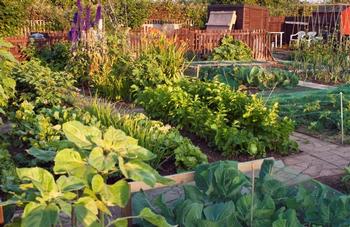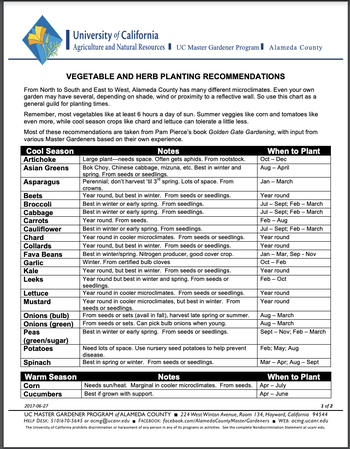
It's Not Too Late to Plant Your Winter Garden
By Jim Farr
For useful references on basics of vegetable garden see References at end.
(Editor's note: This article was written in early fall when the Bay Area was having its "second summer"- temperatures have dipped since then, but the tips below still apply)
When the temperature starts to dip from the high 90s, and you are still picking ripe tomatoes and zucchini nearly every day, Fall and Winter gardens don’t immediately come to mind. Although it may not feel like it, this is the time to be thinking ahead and planning for the next seasons.
We are wonderfully fortunate in the Bay Area that we live in a Mediterranean climate where we can grow vegetables all year around. Mediterranean climates make up only ~3% of the landmass on earth, yet are among the best agricultural areas on Earth. The temperatures are warm in the inland areas but close enough to the ocean to cool down at night and also get an occasional fog. We are fortunate enough to be able to garden all year around and it is a shame not to take advantage of it and grow fresh vegetables in all four seasons.
Unless you have a greenhouse, you won’t be growing tomatoes, zucchini, squash etc in the winter, but many leafy greens (lettuces, kale, chard etc), root crops like garlic, beets, turnips, rutabagas, and potatoes do very well in the winter with a little planning and care.
Planning the garden, where to plant?
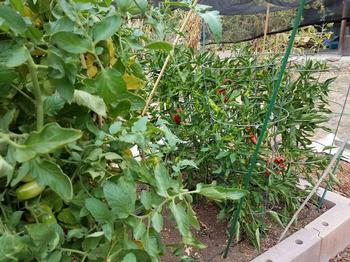
A little planning will help. Some vegetables like tomatoes and zucchini will naturally slow in their production of fruit and will die completely at the first frost. You will want to dig these up from your garden. Plowing them under can cause disease issues because tomatoes, eggplants, pepper and potatoes are highly susceptible to soil-borne fungal diseases which would be promoted if the plants are plowed under. Note: in coastal areas of Alameda County, tomato plants can sometimes be grown all year around.
It is also ok to plant some of the Fall / Winter vegetables between the Summer vegetables. Be careful not to plant them where they might be accidentally pulled up when you do remove the Summer vegetable plants.
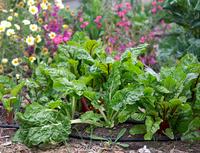
What Can I Grow in Winter?
One way to think about winter vegetables is which ones can be planted directly from seed and which ones are best to plant as starts (young plants).
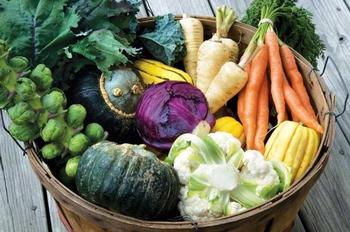
Other vegetables are best planted from starts (baby plants). These include artichokes, broccoli, cabbage, cauliflower, and fennel. These can also be sown indoors, mid summer and transplanted into the garden in September or October.
Other common winter vegetables include fava beans, asparagus, garlic, onions, and shallots. Onions and Garlic bulbs should be purchased from seed houses which are more reliable than getting them from the grocery store. If you purchase Garlic and Onions from a seed house or mail order be sure to order them early. By the time mid to late September rolls around these companies are often sold out of garlic and onions.
When should the individual Fall / Winter vegetables be planted?
An invaluable resource for any gardener are planting timing tables (see below) which indicate for a given geographic area when is the best time to plant a given vegetable from seed, from transplants and when are the typical harvest times. There are many of these charts available but be sure that they are appropriate for your area. For example a planting chart for Sacramento County will not be appropriate for Marin County.
For Alameda County a good chart to use is given in the link below. Remember that Alameda County spans a wide variety of climates so the best planting calendars are broken down into two regions, areas West of the Coastal Hills and areas East of the Coastal Hills. For example, Berkeley or Oakland will have different planting calendars than Livermore.
- Alameda County Vegetable Planting Time Recommendations
- Alameda County Planting Times – West of the East Bay Hills
- Interior Regions of Contra Costa and Alameda Counties
Give your soil some Tender Loving Care
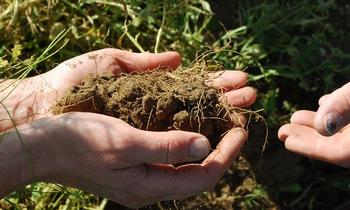
One of the first things to think about once you have chosen what you want to grow and where to grow it, you will need to think about giving your soil some TLC: tender loving care. Everything starts from the soil, healthy soil will give the best chance for your plants to be strong and healthy. Poor soil will make it more difficult to get a satisfactory crop of vegetables.
How do I know if my soil is “good” or “poor”? There are some very simple visual tests. If you dig into the soil and see plenty of worms, your soil is healthy and may require only more nutrients to give your plants a good start. Worms are like the canary in the mine: when they are present and alive, it is a green light to plant in the soil. If there are no worms, then chances are your soil probably lacks some critical component, most notably organic matter such as decaying leaves or plant matter that is broken down or “composted”. Adding compost will "feed" the soil, worms and your plants.
Secondly, good soil often can be worked with the minimum use of tools. For example if your soil has a good proportion of clay, silt and sand then when slightly moist, the soil should be able to be dug with your bare hands. Soil with a high proportion of clay often is hard to work. Soil that does not retain water (dries out very fast) likely has too high of a proportion of sand. You may read more about soil and soil chemistry from our sister program in Placer County.
Some other tips for planting your Winter garden include:
- Work compost into the top few inches of soil before planting or place it around existing plants.
- Add small amounts of fertilizer such as fish emulsion to young plants. Be careful to follow the instructions carefully on the bottle.
- Monitor soil moisture around seedlings and transplants during the drier months of September and sometimes October. In some years Fall in the bay area may not see rain towards mid to late October. So water your garden during these periods until the rains arrive.
Protecting your Winter Vegetables from Critters
One of the most frustrating aspects that gardeners face in Winter gardens is how to deal with all the critters who want to eat your vegetables. You have to remember that insects and larger animals, all have a need for food. When the supply of food around them is less abundant than it is in the Winter, your vegetable garden looks like an oasis of food waiting to be eaten. There are a variety of strategies that can be used to protect your vegetables without having to resort to chemical sprays. If the infestations are not heavy, simply removing the insects by hand can be effective. Netting plants or using various kinds of traps with attractants can also be used where heavier infestations are likely. When sprays are needed for heavy infestations there are a variety of safe, low-toxicity alternatives.
Success! The Fruits (Vegetables?) of your Labor
There is nothing like picking fresh greens, carrots, potatoes etc. from your winter garden. When the weather is cold and rainy, a good hot soup or stew made from fresh vegetables from your garden is the best way to warm up your house and satisfy your appetite.
Want to learn more?
This blog post is brought to you by the Help Desk of the UC Master Gardeners of Alameda County. Subscribe to our blog!
Have a gardening question? We'll help. You can reach us by:
- Emailing acmg@ucanr.edu. Please include a photo of the problem, if you can, plus your name, phone number, city and a description of the problem.
- Using our online form.
- By phone, during our office hours, 10 am to noon Wednesday and 11 am to 1 pm Thursday: 510-670-5645. At other times, please leave a message and we'll return your call during our office hours.
- In person at our Hayward office, during our office hours, only by appointment.
References
Below are a list of references you might find useful in planning, planting and maintaining your winter garden.
Basics of Vegetable Gardening: https://anrcatalog.ucanr.edu/pdf/8059.pdf
Vegetable Gardening Basics for Beginners: https://ucanr.edu/sites/ccmg/files/292083.pdf
UC Vegetable Garden Resource: https://mgsantaclara.ucanr.edu/garden-help/vegetables/vegetable-garden-basics/
Gardening Basics – California Garden Web: https://cagardenweb.ucanr.edu/General/
Composting:https://ucanr.edu/sites/mgslo/files/313433.pdf
Alameda County Planting Times - https://acmg.ucanr.edu/files/264645.pdf
Alameda County Planting Times – West of the East Bay Hills: https://ucanr.edu/sites/MG_Alameda/files/37225.pdf
Interior Regions of Contra Costa and Alameda Counties: https://ucanr.edu/sites/ccmg/files/131284.pdf
Soils 101: Practical Approach to Soils: https://ucanr.edu/sites/glennmg/files/278231.pdf
Low Toxic Methods for Dealing with Insects: http://ipm.ucanr.edu/QT/lesstoxicinsecticidescard.html
Leaf Miner: http://ipm.ucanr.edu/PMG/GARDEN/VEGES/PESTS/vegleafminers.html

